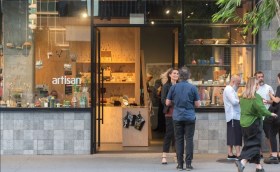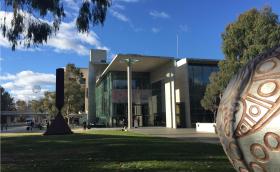Jumaadi performing Displaced Goddess commissioned by Mosman Art Gallery; courtesy the artist and gallery. Photograph by Natasha Polskaya.
Indonesian-born Sydney-based artist Jumaadi has had a full year with his inclusion in the 5th Moscow Biennale, a residency in the United States and travel in The Netherlands, Europe, and Bali on projects. This month he has three consecutive exhibitions across Sydney – the fruits of all that journeying.






